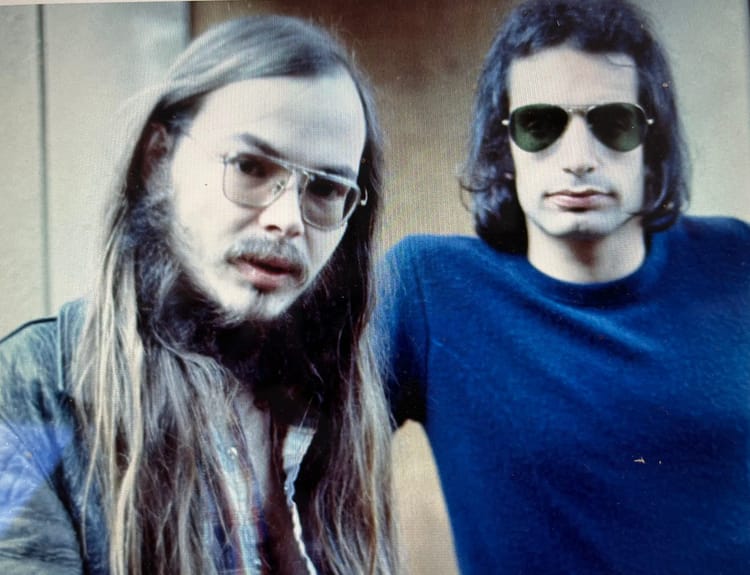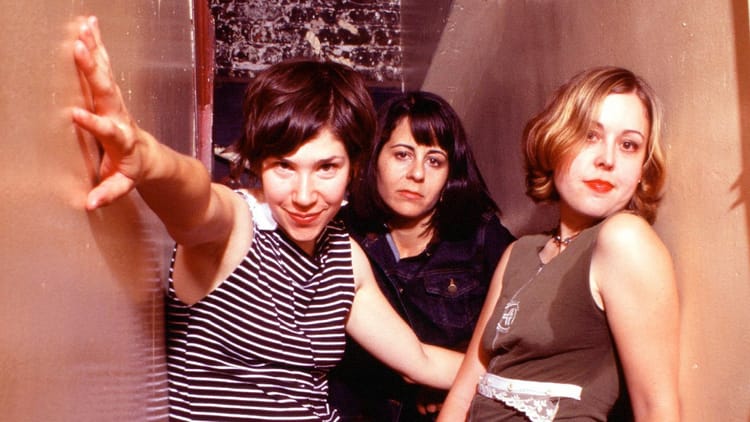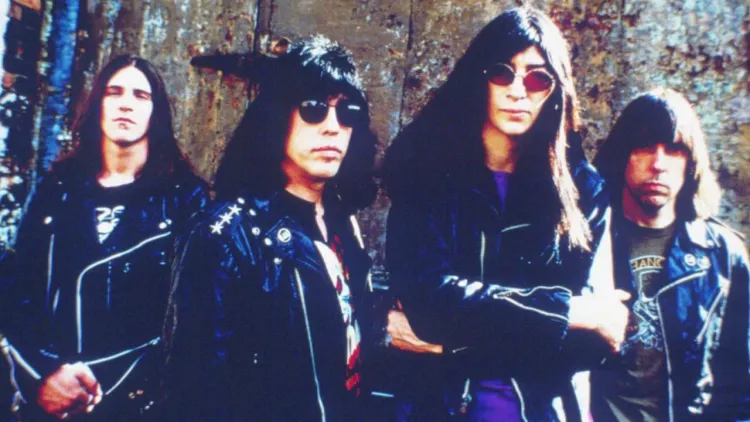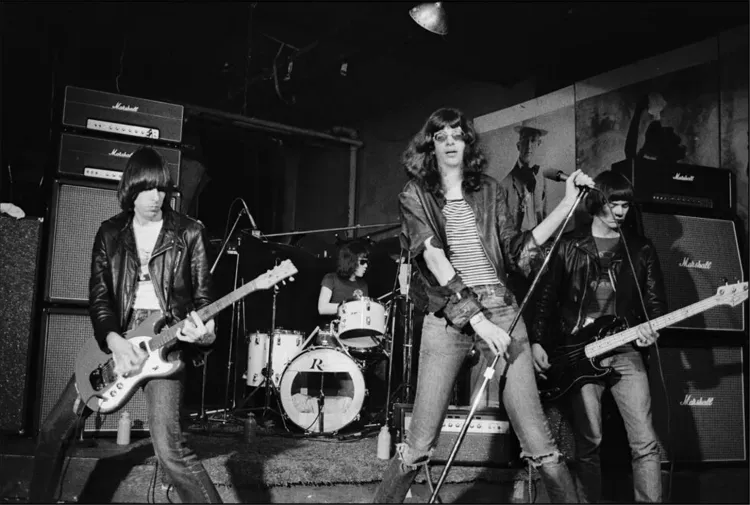Bob Dylan, pt. 1: Anthony's Album Guide

GLIB XENNIAL CONTENT WARNING: If you are the kind of fan/scholar/chore who resents anything less than hushed awe when discussing the Nobel laureate who wrote "Wiggle Wiggle," please proceed with caution and humor. I promise you his legacy will survive this. My handy dandy profoundly subjective numerical rating scheme is explained here.
Bob Dylan (1962) 8
The Freewheelin’ Bob Dylan (1963) 8
The Times They Are A-Changin’ (1964) 8
Another Side Of Bob Dylan (1964) 8
Bringing It All Back Home (1964) 8
Highway 61 Revisited (1965) 8
Blonde On Blonde (1966) 8
Bob Dylan’s Greatest Hits (1967) 6
John Wesley Harding (1967) 8
Nashville Skyline (1969) 5
The baby that would grow to be Bob Dylan was found on the side of a dirt road in rural Minnesota by Ma & Pa Zimmerman during World War II, crawling out of a small, smoking orb and wrapped in an American flag. Little is known about his childhood, though it is said that his adopted parents once lost track of him for three days, only to find him holding court with the elders at a local temple, discussing interpretations of religious text and asking if they’d heard “Be-Bop-A-Lula.” Scripture picks up with him quitting college and riding the rails to New York City, where he met the legendary folk troubadour Woody Guthrie and other, less legendary, folk troubadours. Erudite showbiz vultures perusing the coffeehouse circuit couldn’t believe the potential for relevancy dripping off this boring young man who sang like a lively old man. Bob Dylan (a stage name that reportedly means “archival reissue” on his home planet) was quickly signed to Columbia Records, with execs hoping he might take labelmate and fellow interpreter Barbra Streisand to the Grammys as the young king and queen of universally appreciated American songcraft.
Though he occasionally growls like he’s giving birth to Bruce Springsteen, Dylan's self-titled 1962 debut is a jovial and assured collection of folk standards performed in his best Benjamin Button, solo acoustic, along with two originals. One is about how fancy New Yorkers don’t have much time for his yo-yo tricks, Werther’s Originals and midwestern humility. The other notes that the world owes a lot to Woody Guthrie and that Dylan will humbly accept the role of Woody Guthrie II: Electric Boogaloo (the phrase “electric boogaloo” was found in an obscure Victorian sonnet, and not yet popularized).
Some dude in his early 20s who thinks he's Bob Dylan.
Though Bob Dylan is a fun, heartwarming listen, some historians consider it a worthless piece of shit compared to The Freewheelin’ Bob Dylan, the album that established him as a font of lyrical genius, the voice of a generation, and far too revolutionary to be Barbra Streisand’s Grammy consort (a job then given to Elliott Gould). Freewheelin’ features definitive portraits of sadness over social injustice (“Blowin In The Wind”), anger over social injustice (“Masters Of War”), and doomsaying over social injustice (“A Hard Rain’s A-Gonna Fall”). “Don’t Think Twice, It’s Alright” eloquently informed people that this young old man had time for the ladies, and “Oxford Town” made overtly clear he didn’t have time for racism. With all this definitive portraiture, performed with such authority labelmate Johnny Cash wrote Dylan a letter to ask how he’s so cool, the album isn’t particularly freewheelin’. Dylan also refused to wait until the CD was invented to make albums over 40 minutes, needlessly gifting us a cover of “Corrina, Corrina," two songs with his name in the title, and less definitive rip offs of Guthrie and Leadbelly. Such bloat aside, this remains the album to hear if you want to understand how the folk tradition turned into singer-songwriter idolatry. Sure, we weren’t supposed to worship sacred cows, but dig this milk!
Freewheelin’ would have been promoted on The Ed Sullivan Show with a mockery of The John Birch Society if lawyers hadn’t stepped in, removing the track altogether. Leaning into this rising political fame (he was 22 when he got his first humanitarian award), The Times They Are A-Changin’ opens with a proud anthem for young protestors, followed by several ironic tales of injustice and moral indignation that the kids ate up (though beloved by the baby boomer, it’s important to remember Dylan's pod crashed on Earth during the war). Spacing out the agitprop is gentle romantic rumination (“One Too Many Mornings,” “Boots Of Spanish Leather”) and the closing “Restless Farewell,” a fuck-you to the haters that Frank Sinatra still enjoyed after going Republican. Though thoughtful and effective, Times is Dylan’s most cliche folk album, and the last time the old folkies would be happy with him.
Bob Dylan, before The Band, introduced by Pete Seeger, before the axe.
Running out of traditionals to co-opt and tired of writing op-eds, Dylan spent much of 1964 driving around the country with his bros, meeting ordinary humans, doing drugs and debating if he should become the new T.S. Eliot. He also had a love-hate relationship with The Beatles, screaming over how cute and catchy they were, but worried they’d cut into his female market share. Though Another Side Of Bob Dylan is yet another solo acoustic album, with more tributes to the changing times, Dylan is audibly more interested in letting the ladies know he’s a real frisky cat who could write rhymes about them all day. There’s even a bunch about a farmer’s daughter! “I was so much older then, I’m younger than that now,” he explains from the bottom of a wine jug. Youngest sounding number: Dylan yodeling that he’s strictly no drama on “All I Really Want To Do.” Oldest sounding: the knee-slappers on “I Shall Be Free No. 10,” which must be how all Bob Dylan sounds to people who hate him.
Though his mack game was solid, Dylan knew he’d need to spice things up even more to compete with the Beatles for zeitgeist and chicks (Leonard Cohen would soon arrive to eat the romantic folk chanteur lunch Dylan left behind, needing no shrieks and happy to settle for the Suze Rotolos of the world). Inspired by the electric-blues experimentation John Hammond (son of the John Hammond who signed him) was up to, and already having an appropriate collaborator in Tom Wilson (who would also produce the rock remix of Simon & Garfunkel’s “The Sounds Of Silence”), Dylan decided to reveal his freaky alien superpowers on Bringing It All Back Home. Undoubtedly scandalizing fans of the first four albums, side A kicked off with “Subterranean Homesick Blues,” a fuzzy, tripped-out riff on Chuck Berry's "Too Much Monkey Business" that treats lyrical profundity as just another gas. Though not always so raucous, the rest of the side featured more genre-blurring, ramshackle jive, with Dylan now somewhere between Fats Domino and the Mad Hatter. You can tell how elated he is with a broader musical palette, his jokes now part of the pageantry rather than the focus. Not wanting Pete Seeger to kill him, or to lose the classy English major market entirely, the B side returns to that acoustic, proto-Cohen mode, with “It’s Alright, Ma (I’m Only Bleeding)” giving earnest nerds years of riddles to unpack. If forced to distinguish between all the 8s up top, Home is currently my favorite of Dylan’s early epics, the sound of a young master risking chaos to chase the muse.
Just one year later.
Soon after, The Byrds electrified Home’s acoustic “Mr. Tambourine Man” and took it to number one, helping Dylan lose his last fuck about Seeger or anyone else who thought he should be singing about mining disasters with minimal accompaniment. Highway 61 Revisited, recorded just half a year after Home, opens with the visionary lope of “Like A Rolling Stone,” celebrating and mocking post-adolescent disillusion over triumphant organ and jangle, asking his young audience to recognize the strange new world around them like he once asked them to recognize the failures of their elders. I go back and forth on whether Side B is a touch too samey, especially since I’m past the sassy, snide post-collegiate stage of life it represents. But Highway 61 establishes the glory of electric Dylan as firmly as Freewheelin’ did the acoustic, the joy of finding one’s voice giving way to the joy of playing with it, his proud sincerity abstracted by the catharsis of proud obscurity.
Dylan took this raucous carnival on the road, employing the erudite Canadians (and their token friend from the American south) who’d helped with John Hammond’s electric blues back in 1964 (Hammond’s involvement in this synthesis is frequently cut for time in the history books). Though grumps who knew every word of “Froggy Went-A Courtin’” would scream for Barabbas, most critics and crowds were still keen on America’s Space Jesus. Sonny Bono even had a hit rip-off of “Like A Rolling Stone” by the time Blonde On Blonde came out in 1966, Dylan’s folk-rock casserole now established as both commercially as well as critically appealing. A bonafide double-album, Blonde veers further into novelty (“Rainy Day Women #12 & 35”) and schmaltz (“Just Like A Woman”) than ever before, but generally trots out yet more in-jokes and love letters with his trademark confidence and a new level of professional chill. Deeper examinations of Dylan’s text can be found at your local library.
This Dylan rip, so campy Mott The Hoople couldn't help but cover it, reached #10. Imagine how big a Bobby & Cher song would have been!
A motorcycle accident helped Dylan rediscover his bed after seven albums and two musical sea changes in five years, so our hero decided to take a long nap in upstate New York, joined by his young family and those erudite Canadians. Columbia Records took the opportunity to put out a Greatest Hits album that’s ironically shorter than any of the full-lengths represented on it. It’s an easy listen, with a great non-album single to its credit (“Positively 4th Street”). But it’s also ahistorically compiled so you can’t see how Dylan evolved from the last wandering minstrel to the first singer-songwriter. I’m sure his most basic-ass fans were delighted.
That said, this next opinion may define me as basic-ass myself, if not remarkably advanced-ass. After churning out whimsical if not inscrutable copyrights with his Canadian friends for a year, Dylan quietly released John Wesley Harding, recorded during a respite in Nashville with hardly any accompaniment. While Greil Marcus types hear the dense, cryptic glory of American genius in these grooves, I must admit I hear the birth of self-conscious, ersatz Americana. It’s enjoyable, especially on the more relaxed B side, with highlights like “All Along The Watchtower” and “Dear Landlord” showing he still has a taste for righteous foreboding and protest. But the austerity of it all seems ironically facile and derivative rather than potent, with narrative loose ends included because these kinds of narratives have loose ends. It’s possible I haven’t given the songs enough attention and consideration. It’s also possible his scholars assume genius in every line and work their way back from there. But Harding is the first time I hear Dylan asserting literary stature, saying he’s an important artist louder than anything else. Then again, maybe he was riffing on literary pretensions, too hip to contradict anyone who said he achieved them.
Kermit The Frog at his most vulnerable, proudly introduced by Sam The Eagle.
Still not eager to compete in the exploding commercial counter-culture, Dylan continued to hide out with his family throughout the excitement of 1968, his silence and Harding solidifying his mystique. He finally popped his head out in April 1969 with Nashville Skyline, an album that opens with him remaking “Girl From The North Country” from Freewheelin’ with a long-promised Caruso imitation, Johnny Cash trading couplets by his side. Once again, some fans believe this romantic country exercise is proof that Dylan knew just what the world needed. Once again, I think he might have been daring people to call him a jackass. “Lay, Lady, Lay” is a great demo for Ronald Isley, and there are a few more credible copyrights. But there are Ween albums I have an easier time taking seriously than the pinched crooning on Nashville Skyline. It’s some Adam Sandler at the Grand Ol Opry bullshit.
Note: I’m not discussing archival reissues of concurrent recordings because jfc. Even if they’re as impressive and eye-opening as PR writers insist, nobody needs to start with that shit. If you love an album discussed here, by all means, check out a related 8CD compilation of live tracks and outtakes at your leisure.
In Part 2: SuperBob faces the heartbreaks of divorce and the lack of a thriving cinematic career in the ‘70s, finally earning a 9 for his trouble.
Bringing It All Back Home is at 258 on My Top 300 Favorite Albums of All Time. I'm telling you this because I've found people are more inclined to discuss and share reviews if there's a quantitative element at the top or bottom they can easily debate. Prove me right! Direct correspondence, however, can be shipped off to anthonyisright at gmail dot com.




